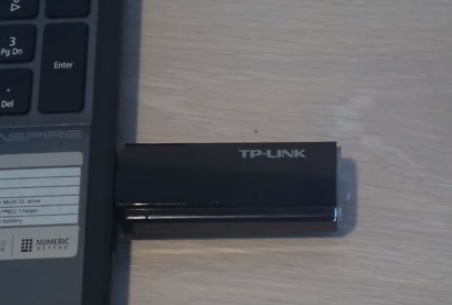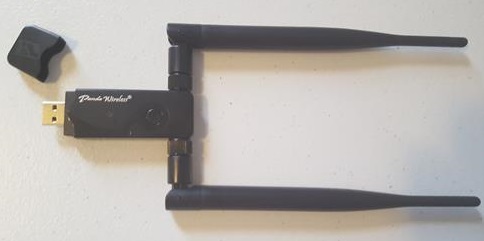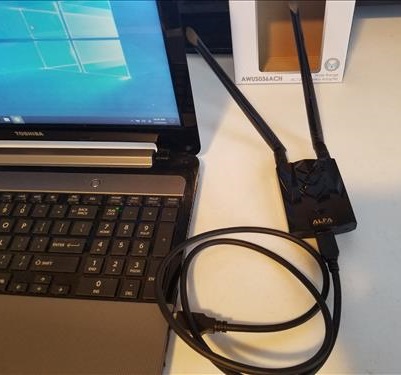WifiDocs / WirelessCardsSupported
Even if your wireless card does not have a driver designed for Ubuntu, you may be able to get it to work using NDISWrapper and a Microsoft Windows driver. This comes at the expense of functionality and reliability. If you get this method working your Internet connection will most likely be very unstable.
Wireless Cards
To determine what wireless card/chipset you have, first determine whether it is a separate device plugged into the computer or not. If it is a separate USB device, open up a terminal and type the following:
and look for words like «wireless» to find your card type.
For chips that are not USB but included in the computer, type:
and read the last section.
By Manufacturer
The Community has created articles for the following Manufacturers:
In an effort to help with the cleanup of this page, I modified these links to show up within the article as just the manufacturers’ names instead of the full URL path. On each manufacturer’s page, while working on the clean up, I’m separating them by card type and then linking to them here. This is in an effort to streamline the code and make the documents more organized.
By Version
By Card
Please take a moment and add your card to the wiki if there isn’t a page on that device yet. It’s very simple, try to follow the format of template but don’t worry too much about following guidelines. It’s much more important to document your experience for others.
To create a page, simply enter the model # and version in the box (example: dwl-g650vB5) and then click on the Create Device Page button. If there is a page on your device already, open it and add your comments/experience to the existing page.
- WifiDocs/Device
- WifiDocs/Device/ADDON_ADD-GWP110
- WifiDocs/Device/AR5006EG
- WifiDocs/Device/AR5007
- WifiDocs/Device/Actiontec
- WifiDocs/Device/Airlink101_AWLL3026
- WifiDocs/Device/AirportExtreme
- WifiDocs/Device/Atheros/AR9285
- WifiDocs/Device/BCM43224 802.11a/b/g/n (rev 01)
- WifiDocs/Device/BT_Voyager_1055
- WifiDocs/Device/Belkin 300 N F7D2101
- WifiDocs/Device/Belkin F5D8053
- WifiDocs/Device/Belkin_F5D7050_ver_3000_(Ralink_rt73_driver)
- WifiDocs/Device/Belkin_F5D8010
- WifiDocs/Device/BuffaloWLIL11GUSB
- WifiDocs/Device/CiscoCB21AG
- WifiDocs/Device/CompaqW200
- WifiDocs/Device/D-Link_WUA-1340
- WifiDocs/Device/D-Link_WUA-2340
- WifiDocs/Device/DWA-111
- WifiDocs/Device/DWA-140
- WifiDocs/Device/DWA-552
- WifiDocs/Device/DWL-122
- WifiDocs/Device/DWL-520vE1
- WifiDocs/Device/DWL-G122_(Rev_B)
- WifiDocs/Device/DWL-G122_(Rev_C1)
- WifiDocs/Device/DWL-G650+
- WifiDocs/Device/EdimaxEW7128G
- WifiDocs/Device/EdimaxEW7128UG
- WifiDocs/Device/EnGenius EUB9603
- WifiDocs/Device/F5D7000
- WifiDocs/Device/F5D7010
- WifiDocs/Device/F7D2102
- WifiDocs/Device/Fritz!WLAN_USB_Stick
- WifiDocs/Device/ICIDU_NI-707529_150N_ PCI-E
- WifiDocs/Device/IntersilPrism25Wavelan
- WifiDocs/Device/Linksys WMP600N
- WifiDocs/Device/Linksys WUSB600N
- WifiDocs/Device/LinksysWPC54GS-UK
- WifiDocs/Device/LinksysWUSB11
- WifiDocs/Device/LinksysWUSB54GC
- WifiDocs/Device/LinksysWUSB54GP
- WifiDocs/Device/Linksys_WMP54GX
- WifiDocs/Device/Linksys_WUSB54GS_v1_&_v2
- WifiDocs/Device/NEXXT NW122NXT12
- WifiDocs/Device/NetgearMA111
- WifiDocs/Device/NetgearMA111 (shot.png)
- WifiDocs/Device/NetgearWG111
- WifiDocs/Device/Netgear_WG311_v3
- WifiDocs/Device/PENGUIN80211N
- WifiDocs/Device/Pentagram_Hornet_USB_Lite
- WifiDocs/Device/Proxim RangeLAN-DS
- WifiDocs/Device/RT3090
- WifiDocs/Device/RTL8180L
- WifiDocs/Device/Ralink RT5390
- WifiDocs/Device/RalinkRT2860
- WifiDocs/Device/Ralink_RT5370
- WifiDocs/Device/Realtek 8172
- WifiDocs/Device/RealtekRTL8187b
- WifiDocs/Device/Rosewill RNX-N150UBE
- WifiDocs/Device/Rosewill RNX-N2LX
- WifiDocs/Device/RosewillRNXN150UBE
- WifiDocs/Device/Sabrent 802.11n Wireless PCI
- WifiDocs/Device/Sabrent PCI-G802
- WifiDocs/Device/SabrentUSB-G802
- WifiDocs/Device/SparkLAN WL-850R
- WifiDocs/Device/TL-WN722N
- WifiDocs/Device/TP-LINK_TL-WN781ND
- WifiDocs/Device/TP-Link_TL-WN620G_(ndiswrapper)
- WifiDocs/Device/TP-Link_TL-WN620G_(ndiswrapper) (updated TPLink TL-WN620G 1.5.0.119.rar)
- WifiDocs/Device/Tenda W522U USB
- WifiDocs/Device/Tenda_W311M
- WifiDocs/Device/Topcom_Skyracer_USB_4001g_(WLAN-USB-Stick)
- WifiDocs/Device/WG111T
- WifiDocs/Device/WG121
- WifiDocs/Device/ipn2220
- WifiDocs/Device/wpn111
- WifiDocs/Device/xg-301
WifiDocs/WirelessCardsSupported (последним исправлял пользователь 84 2015-04-20 03:46:51)
The material on this wiki is available under a free license, see Copyright / License for details
You can contribute to this wiki, see Wiki Guide for details
Top Best Linux Compatible USB Wireless Adapters
Getting a good USB wireless adapter to work with Linux was problematic in the past but less so now with many available.
It is the chipset of a WiFi dongle that makes it compatible with Linux.
Popular USB adapters Chipsets include the Ralink 3070, Atheros AR9271, and Realtek 8187.
There are many good units available with some of our favorite picks below.
As always be sure to read the reviews on Amazon or elsewhere to be sure a USB adapter is a good fit for your set up.
*This post contains affiliate links.
Our Picks for Top Linux Compatible USB Wireless Adapters
It has two 5dBi antennas to get good range and comes with a USB extender if needed.
A big plus is its Kali Linux compatible and can go into Monitor Mode.
The PAU09 is a dual Band 2.4Ghz/5Ghz adapter and uses the Ralink RT5572 Chipset.
The one downside is no 802.11ac support, as it is an 802.11n unit.
Still, its low-cost, good range, and wide compatibility make it a good Linux USB adapter.
It comes with two large antennas that greatly improve a wireless signal.
It uses the RTL8812AU Chipset which Kali Linux released Drivers for.
This is good news for anyone wanting to use the newer 802.11ac WiFi protocols with Linux.
During our test, it worked well with some impressive wireless speeds, 213Mbps Download, and 21Mbps Upload.
Alfa USB adapters are widely used in the Pen Testing community for their strong Chipsets, Linux compatibly, and screw on antennas that can be easily changed out for larger ones.
It is a small dongle so the range is not the best and it only works in the 2.4 GHz range with 802.11n.
While not the fastest or longest range dongle its ability to work with many operating systems make it a good low-cost choice for a Linux USB WiFi dongle.
Chipset RT3070
802.11n
2.4 GHz
TP-Link N150 Wireless High Gain USB Adapter (TL-WN722N)
UPDATE: The TL-WN722N chipset has changed with the new version 2 not able to go into monitor mode.
The TP-LINK TL-WN722N is used widely in the Pen testing Kali Linux community.
It works with the aircrack-ng suite and can go into monitor mode for testing a wireless network security.
A 4dBi External Antenna gives it better range than many smaller dongles.
Chipset Atheros AR9271
802.11n
2.4 GHz
It uses the Realtek RTL8812AU chipset which many have had good results getting 802.11ac in the 5GHz range working with Linux.
Good 802.11ac USB dongles have been slow to come about and often require some setup for the drivers.
Here is a link to Realtek RTL8812AU chipset and Linux. https://github.com/abperiasamy/rtl8812AU_8821AU_linux
If you are looking for an easy setup than going with a known working wireless-N dongle would be better.
Range
A dongle with a large external antenna will have better range, the frequency can also matter.
Wireless dongles that transmit in the older 2.4 GHz frequency can transmit a signal better than the new 5 GHz band.
Radio waves can travel better at lower frequencies than higher frequencies giving the lower 2.4 GHz better range than 5 GHz.
5 GHz was opened up to WiFi in 2013 since the 2.4 GHz band has become overcrowded and full of signals.
In a crowded wireless environment, signals begin to collide which than needs them to be resent slowing down a network.
Speed
The new 802.11ax WiFi 6 protocol introduced in 2019 is the fastest WiFi protocol available.
Unfortunately, there are no 802.11ax WiFi 6 Linux adapters yet.
The 802.11ac protocol introduced in late 2013 is the fastest WiFi protocol available for adapters currently.
802.11ac can move data up-to a theoretical 5Gbps with the most common speed 1.3 gigabits per second (Gbps)
This gives it a huge advantage over Wireless-N the last WiFi protocol introduced, which can move data up-to 150/300 Mbps.
802.11ac only works in the 5 GHz band which means range would be sacrificed for faster speeds. Wireless-N is the only protocol that can work in both bands 2.4GHz and 5GHz.
802.11ac USB adapters with drivers written for the Linux have been slow to come about. There has been some good Linux compatibility with the Realtek RTL8812AU chipset and 802.11ac.
Pen Testing
Being able to pen test with Linux is one of the benefits of using it.
Unfortunately not all USB adapter can pen test and go into monitor mode. The good news is there are some that can be used to pen test click here for our list of Linux Pen Testing USB Adapters.
Summary
When looking for an adapter that will work with Linux be sure to look at the chipset the adapter uses.
Also, beware of any changes to the chipset with new versions of an adapter and if the manufacturer has changed it.
While not common some manufacturers have been known to change an adapter chipset with new versions.
As always be sure to read the reviews on Amazon or elsewhere to be sure an adapter is a good fit for you and your setup.
32 thoughts on “ Top Best Linux Compatible USB Wireless Adapters ”
- John Milbank January 8, 2021 I bought a usb wireless dongle from a trader on e-bay. The drivers did not install and I could not get it to work with linux. I tried it on my Windows 10 laptop and it worked straight away.
My wifi card on my linux PS failed so I tried a power line adapter. That worked very well. Unfortunately the power line adapter locked up my wireless network. I also tried a wifi booster with an ethernet cable and that works very well also. I now have two computers in the same room with versions of Ubuntu installed. One has no wireless card and is connected to the ethernet port of the wifi range extender. The other computer now has a replacement wifi card. The fastest download test results are achieved using the windows laptop with adapter set to 5g band. Next is Powerline on the linux pc, then wifi booster connected by ethernet to the PC.
- Nirupan October 2, 2020 I recently bought the same but having trouble installing the drivers. Could you please help me. I can email you the details. much appreciated. thanks


